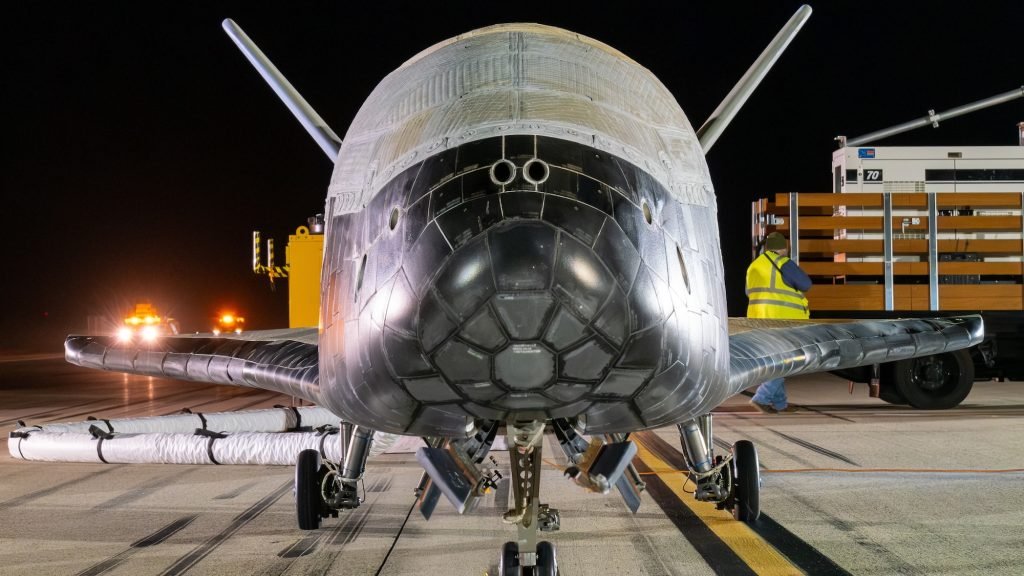The US Space Force will bid the summer farewell by once again launching its (not-so-secret) secret space plane, the X-37B. According to a July 28 announcement, the Boeing-manufactured orbital test vehicle is scheduled to embark on its eighth mission (OTV-8) from Florida’s Kennedy Space Center on August 21. After hitching a ride aboard a SpaceX Falcon 9 rocket, the X-37B will orbit high above Earth while facilitating multiple payload experiments. Its exact altitude capabilities are unknown, but previous estimates put it at around 250 miles above the planet.
The Space Force described the X-37B as a “dynamic and responsive spacecraft responsible for conducting a range of tests and experiments that expedite the development of critical next-generation technologies and operational concepts for reusable space capabilities.” In civilian terms, this means the X-37B hosts an array of both classified and unclassified payloads intended to bolster US defense capabilities, among other objectives.
While its larger purposes remain murky, the federal government hasn’t been shy about the X-37B’s existence. Its first mission was widely reported in 2010, following a decade of development and construction. In 2017, Orlando residents could hear the sonic boom from during its fifth mission’s atmospheric reentry.
Not every experiment is shrouded in secrecy, however. The Space Force touted plans to test a new laser communications system, as well as the “highest performing quantum inertial sensor ever tested in space.” The former project is overseen by the Air Force Research Lab, and will focus on beaming data-packed infrared light to low-Earth orbiting satellites. Lasers are capable of storing much more information and are considered far more secure than commonly used radio frequencies. Developing and implementing the technology would have far-reaching consequences across military, commercial, and government applications.
Meanwhile, the quantum inertial sensor demonstration will offer engineers at the Defense Innovation Unit an unprecedented opportunity to continue fine-tuning an unaided, space-based navigation system intended to be a successor to GPS. Instead of relying on satellites in orbit around the Earth, the inertial sensor determines positioning by measuring the acceleration and rotation of atoms at a quantum level.
“This technology is useful for navigation in GPS-denied environments and consequently will enhance the navigational resilience of U.S. spacecraft in the face of current and emerging threats,” Space Force explained in its announcement. Quantum inertial sensors may also be instrumental for astronauts stationed at a permanent lunar base.
It’s unclear how long OTV-8 will last, but if past missions are any indication, the unpiloted plane will remain above the planet for a while. X-37B’s most recent mission launched on December 28, 2023 and returned after 434 days in orbit. Its longest mission (OTV-6) took place from December 28, 2023, to March 7, 2025, and lasted 908 days.
The post Space Force schedules the next mission for its secret robot plane appeared first on Popular Science.


